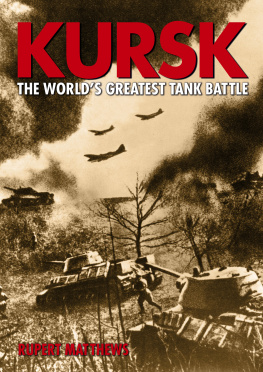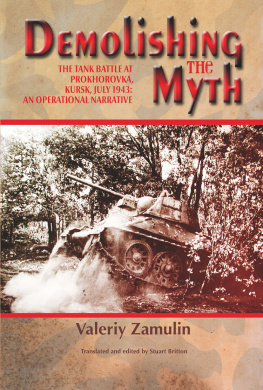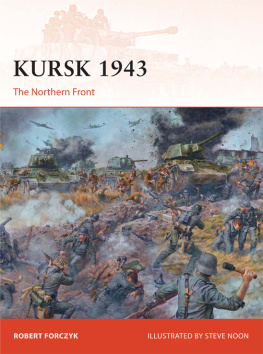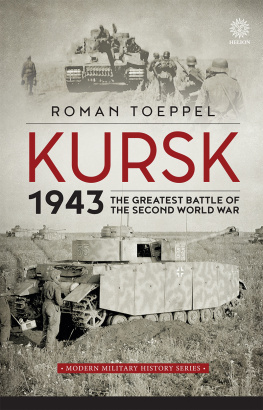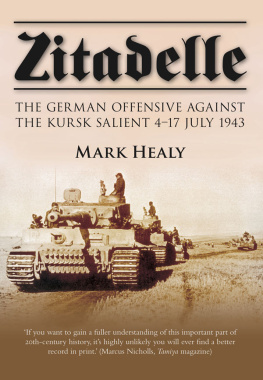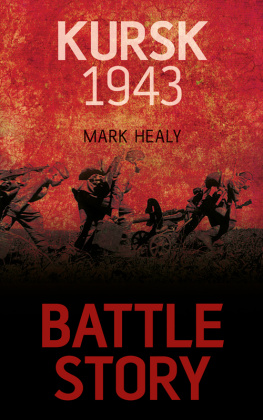THE BATTLE OF KURSK
KEY INFORMATION
When: 5th July - 23rd August 1943
Where: In the neighborhood of Kursk (Russia)
Context: The Second World War (1939-1945)
Belligerents: The Third Reich against The Union of Soviet Socialist Republics (USSR)
Commanders and leaders:
Erich von Manstein, German general (1887-1973)
Walter Model, German general (1891-1945)
Nicolai Fyodorovich Vatutin, Russian general (1901-1944)
Jukov, Russian general (1896-1974)
Outcome: Russian victory
Victims:
Russian camp: approximately 200,000 killed, 660,000 wounded and missing
German camp: approximately 90,000 killed, 400,000 wounded and missing
INTRODUCTION
Although less well-known than the Battle of Stalingrad (September 1942-February 1943), Kursk was nevertheless one of the main confrontations between the Germans and the Russians during the Second World War and one of the most significant tank battles in history.
The offensive was launched by Germany in July 1943 under the name Operation Citadel. The goal was to regain the initiative on the Eastern Front after the major defeat they had undergone in Stalingrad. Adolf Hitler (1889-1945) hoped to be able to seize the territories they had lost during the winter, relying on the fact that the Wehrmacht (German army) had always proved itself to be superior under favorable climatic conditions.
In order to obtain a victory that would forever be remembered, Germany aligned an impressive fighting force on the Kursk salient (a salient of 23,000 km, located between Orel in the North and Belgorod in the South, which ran into the German front): There were roughly one million soldiers, more than 2500 tanks and 2000 planes on the front. However, the operation was delayed and the Red Army, informed of the operation, had time to prepare. Consequently, when the battle broke out, the Soviets were able to count on a numerically superior army of 1.3 million men, 3600 tanks and 200 planes. After more than a month of fighting, the German troops were pushed back, at a heavy cost for both armies. This defeat meant the end of the Fhrers last hopes to vanquish the Soviet Union.
POLITICAL AND SOCIAL CONTEXT
The battle of Kursk took place in the context of the Second World War, which militarily opposed:
The Axis, with Germany, Italy and Japan;
The Allies, with the United States, the United Kingdom and the Soviet Union.
THE ORIGINS OF THE SECOND WORLD WAR
Although it was a result of World War I (1914-1918), World War II was very different. The motivations, the belligerents and the social context had greatly changed during the two decades separating the two conflicts.
Many factors contributed to the creation of an explosive situation in 1939, including:
The consequences of the Treaty of Versailles, which aimed to re-establish peace and define the punishments to be paid by Germany, which was considered to be responsible for this first world conflict. While the winning countries wanted a strict enforcement of the treaty ratified at the end of the First World War, others would have liked it to be revised. This was namely the case with Germany, whose war debts were enormous, and Italy, who was among the winners but couldnt expand its territory, as opposed to the other European powers;
The economic crisis. From 1929, the unemployment rate rose drastically in many countries, which became inwardly focused. The people, ruined, were ready for change, thus constituting a very favorable ground for extremism;
The German expansionist policy. In his book Mein Kampf (1923-1924), Adolf Hitler explained his desire to expand Germany, a desire which he justified through the population growth of his country and his duty to offer his people a territory big enough for its needs;
Italian expansionism. Benito Mussolini (Italian statesman, 1883-1945) also wished to expand the territory of his country. Therefore, he conquered Ethiopia in 1936 and Albania in 1939. That same year, he signed a German-Italian military alliance called the Pact of Steel;
The arms race. From 1933, Adolf Hitler increased the military strength of Germany, despite the interdiction imposed by the Treaty of Versailles;
The Spanish Civil War (1936-1939). General Francisco Franco (1892-1975) tried to overthrow the democratic government in place and was supported in this by Adolf Hitler and Benito Mussolini.
G OOD TO KNOW
Nazism is an ideology that cannot be dissociated from its founder, Adolf Hitler. After his failed coup dtat in 1923 (the Munich Putsch) he was imprisoned. During his detention, he wrote a book called Mein Kampf, in which he developed this ideology based on two principles:
The Aryans are the elite of the people and therefore have all the rights, including that of conquering vital space. According to him, the Germans are the best representatives of this Aryan race;
A totalitarian state, led by an almighty leader, is necessary for the flourishing of the German race when facing the people he judged to be inferior.
Adolf Hitler took advantage of the difficult social and economic context to impose his ideas on the population. After his rise to power in 1933, he progressively imposed the Nazi ideology on Germany and established the Third Reich. This ideology would later die along with the Fhrer, in May 1945.
Europe seemed to catch fire, but France and the United Kingdom remained relatively passive in the face of all these early warning signs, thus allowing Adolf Hitler to plan his conquest. He first invaded Austria in 1938 (the Anschluss) and received a warning from the Allies during the Munich conference that same year, after he attacked Czechoslovakia. But it was not until the month of September 1939 and the beginning of the invasion of Poland that France and the UK declared war on Germany.
TREATY OF NON-AGGRESSION BETWEEN GERMANY AND THE USSR
Adolf Hitler managed to invade Poland in 1939 due to the fact that he had concluded an agreement with the Russian giant. The treaty of non-aggression between Germany and the Soviet Union ensured the neutrality of one of the two countries if the other were to be at war. But this agreement also included a secret clause: the repartition of the Eastern European countries among the Fhrer and Joseph Stalin (Soviet statesman, 1878-1953). According to the terms of this pact, Poland was to be divided between Germany and the Soviet Union.
Such a treaty surprised the whole of Europe because of the differences existing between the two political systems and because of the lack of common interests. But, in reality, Joseph Stalin feared the German power and didnt trust the European democracies to help him. He even suspected France and the UK of encouraging Germany to attack Russia in order to get rid of the threat of communism.








